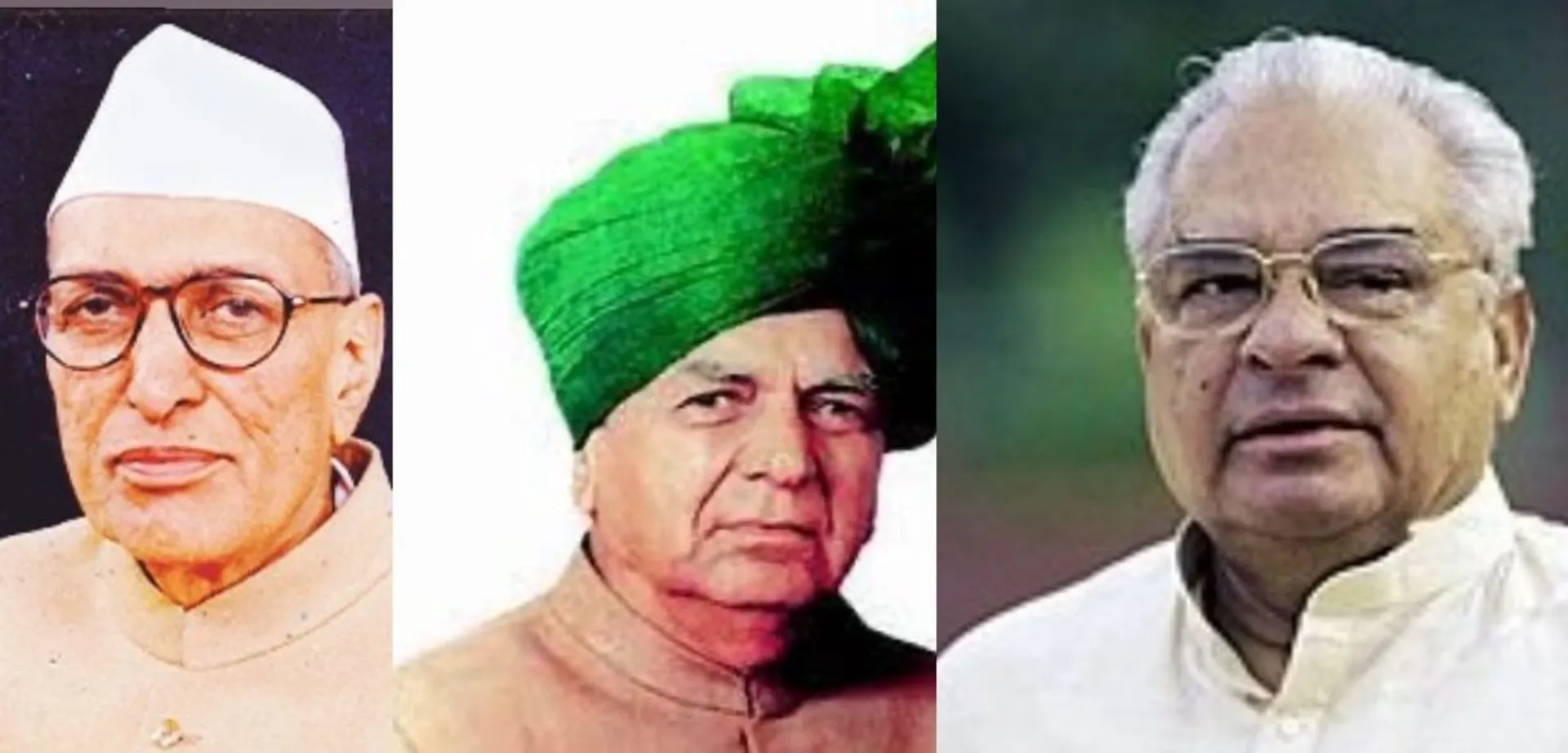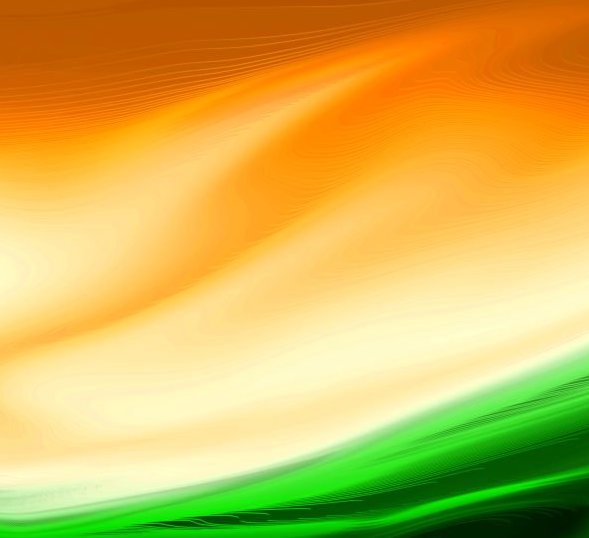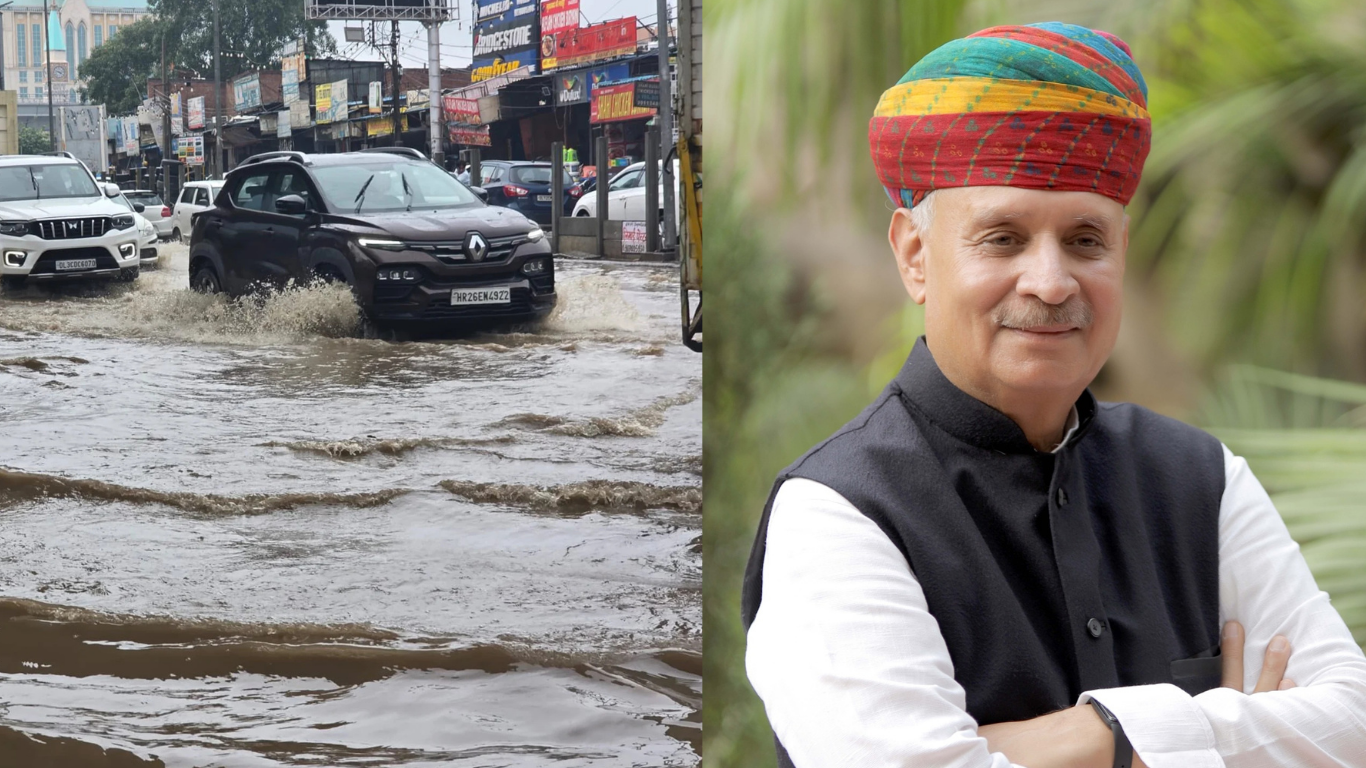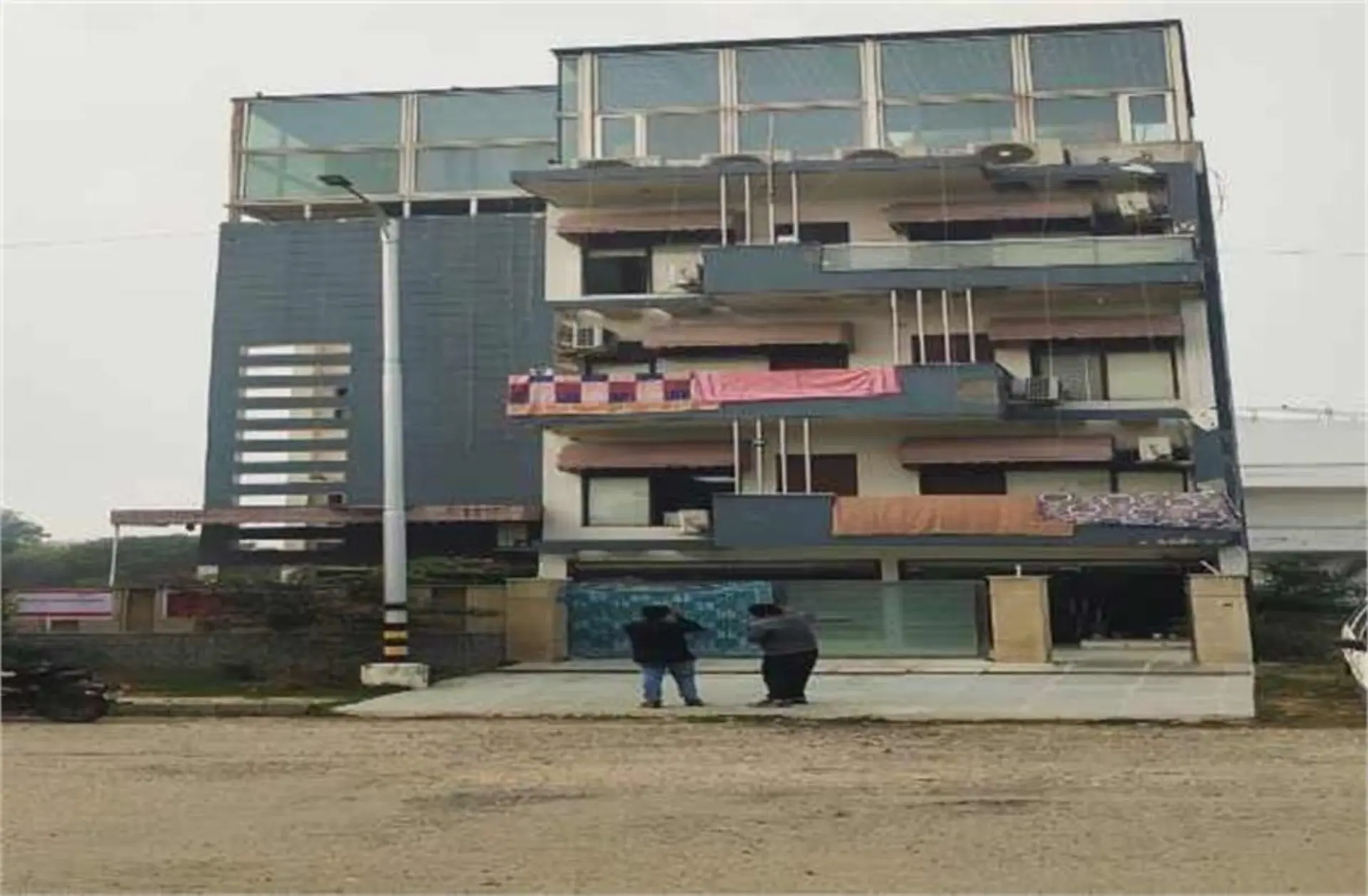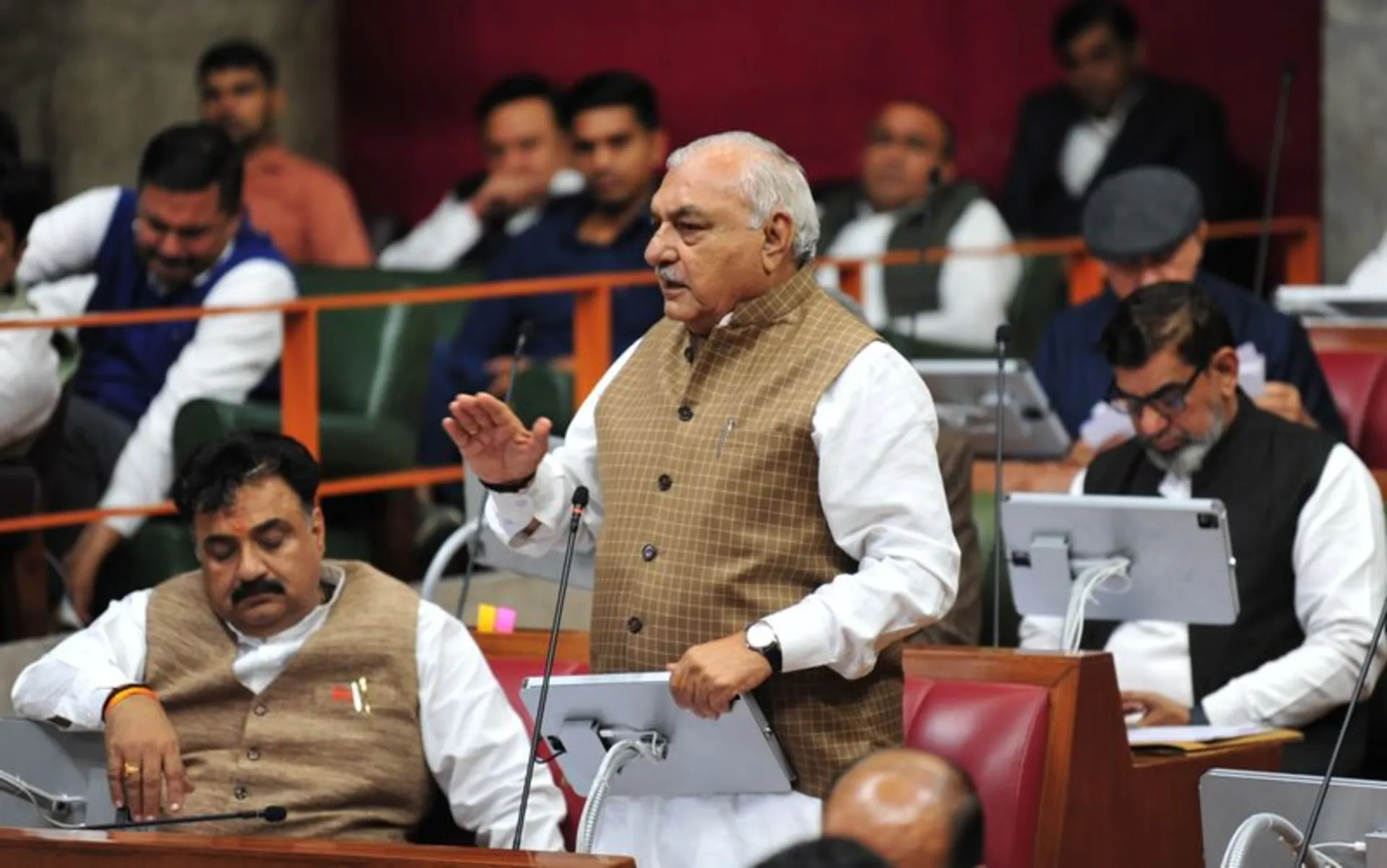
The Haryana Story, your trusted source for local political news, brings you an exclusive, in-depth report on the unfolding drama in the state's political arena. As Haryana gears up for its assembly elections next month, a unique spectacle is taking centre stage - the clash of the Lal clans. Fifteen members from three of the most influential political families in the state are preparing to battle it out across nine seats, spanning five districts.
The Three Lals: A Political Legacy
For decades, the families of Devi Lal, Bansi Lal, and Bhajan Lal have been the pillars of Haryana's political landscape. These three leaders, all bearing the surname 'Lal', have left an indelible mark on the state's politics.
Devi Lal, often referred to as "Tau" (elder uncle), served as India's Deputy Prime Minister from 1989 to 1991, except for a brief period when he was dropped from the Cabinet due to violence in Haryana's Meham during a bypoll in 1990. He also held the position of Haryana's Chief Minister twice, from 1977 to 1979 and again from 1987 to 1989. Devi Lal was known for his strong advocacy for farmers' rights and his significant influence in Jat politics.
Bansi Lal, often credited with the rapid industrialization of Haryana, served as the state's Chief Minister for three terms: 1972-1977, 1986-1987, and 1996-1999. He was also a Union Minister in the Indira Gandhi government and played a crucial role during the Emergency period (1975-1977).
Bhajan Lal, known for his political acumen and ability to switch parties to remain in power, served as Haryana's Chief Minister twice, from 1979 to 1986 and again from 1991 to 1996. He was famous for engineering large-scale defections, leading to the phrase "Aya Ram Gaya Ram" in Indian politics.
Their influence has been so profound that since Haryana's formation in 1966, no assembly election has been held without at least one member from each of these families contesting. However, the upcoming elections present a scenario never seen before - family members are now pitted against each other, often representing rival political parties.
The Devi Lal Dynasty: A House Divided
The most intriguing contests are emerging from the Devi Lal family. Nine members of this clan are in the fray, with some directly competing against each other.
In Dabwali constituency alone, three family members are locked in a triangular contest:
1. Aditya Devilal (Indian National Lok Dal - INLD): Son of Devi Lal's son Jagdish Chander
2. Digvijay Chautala (Jannayak Janta Party - JJP): Great-grandson of Devi Lal, son of Ajay Chautala
3. Amit Sihag (Congress): Grandson of Devi Lal's cousin, Ganpat Ram
Aditya Devilal, Digvijay Chautala and Amit Sihag
Meanwhile, in Rania constituency, we see a grandfather-grandson face-off. Ranjit Singh, Devi Lal's son and former minister in the BJP government, is running as an independent candidate against his own grandson, Arjun Chautala of INLD.
Ranjit Singh and Arjun Chautala
Other notable candidates from the Devi Lal family include:
- Abhay Chautala (INLD) - contesting from Ellenabad
- Dushyant Chautala (JJP) - contesting from Uchana
- Sunaina Chautala (INLD) - contesting from Fatehabad
Abhay Chautala, Dushyant Chautala and Sunaina Chautala
This division within the family is not new. The Chautala clan has seen several splits over the years, leading to the formation of splinter groups like the JJP, headed by Dushyant Chautala.
Bansi Lal's Legacy: Cousin vs Cousin
The Bansi Lal family is not far behind in this family feud. In Tosham constituency, cousins Anirudh Chaudhary (Congress) and Shruti Chaudhry (BJP) are set to compete against each other.
Anirudh is the son of Ranbir Mahendra, Bansi Lal's elder son who once served as the President of the Board of Control for Cricket in India (BCCI). Shruti, on the other hand, is the daughter of Surender Singh, Bansi Lal's younger son who died in a helicopter crash in 2005.
This contest is particularly interesting as it showcases how political allegiances can shift within families - Shruti and her mother Kiran Choudhry recently joined the BJP after quitting Congress. Kiran, who shifted her political base to Haryana from Delhi after her husband's death, is now a BJP Rajya Sabha MP.
Adding another layer to the family's political involvement, Bansi Lal's son-in-law, Sombir Sheoran, is contesting as a Congress candidate from the Badhra assembly seat in Bhiwani.
Anirudh Chaudhary and Shruti Chaudhry
Bhajan Lal Clan: Spreading Their Bets
While not directly competing against each other, three members of the Bhajan Lal family are contesting from different constituencies:
1. Chander Mohan (Congress) - Panchkula constituency: Bhajan Lal's elder son, who once served as Deputy Chief Minister of Haryana
2. Bhavya Bishnoi (BJP) - Adampur constituency: Grandson of Bhajan Lal, son of Kuldeep Bishnoi
3. Dura Ram (BJP) - Fatehabad constituency: Bhajan Lal's nephew
Chander Mohan, Bhavya Bishnoi and Dura Ram
The Adampur seat holds special significance, having been a stronghold of the Bishnoi family for an impressive 56 years. Bhajan Lal himself won the first election from this seat in 1967, and since then, the family has continued to dominate this constituency.
The Changing Face of Haryana Politics
This unprecedented level of intra-family competition marks a significant shift in Haryana's political landscape. Political analyst Shivansh Mishra explains, "These families have been central to Haryana's political landscape since the state's formation. However, the rise of the BJP has complicated the dynamics, forcing these political dynasties to adapt and sometimes compete against each other to maintain relevance."
The rise of the BJP in Haryana, particularly since 2014, has indeed changed the political equations. The party, which was once a minor player in the state, has managed to form governments and attract members from these traditional political families.
Another significant factor is the changing caste dynamics in the state. Haryana's politics has long been dominated by Jat leaders, with Devi Lal being a prominent Jat face. However, the state has seen the rise of non-Jat leadership in recent years, particularly under the BJP rule.
Implications for Haryana's Political Future
The upcoming elections will not only test family loyalties but also challenge the traditional caste equations that have long dominated Haryana's politics. As voters prepare to cast their ballots, they face a complex choice - whether to prioritize family legacies, party affiliations, or individual candidates' merits.
This family feud also raises questions about the future of dynastic politics in the state. While these families have dominated Haryana's political scene for decades, the internal rivalries and shifting allegiances might lead to a dilution of their collective influence.
Moreover, the alignment of various family members with different political parties could lead to a fragmentation of their traditional vote banks. This could potentially benefit newer political forces or lead to more coalition governments in the future.
Stay tuned to The Haryana Story for more updates, in-depth analysis, and on-the-ground reports as we approach this crucial election. Our team of experienced political journalists will bring you the latest developments, expert opinions, and exclusive interviews with key players in this high-stakes political battle.



